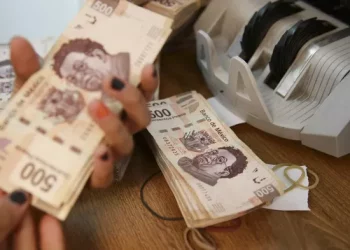The world of currency exchange is a complex and ever-changing landscape, influenced by a myriad of economic, geopolitical, and market factors. For decades, the United States dollar (USD) has been considered one of the world’s most stable and powerful currencies. However, there are several other currencies that have gained prominence and are now worth more than the U.S. dollar. In this article, we will explore seven of these currencies, shedding light on the factors that contribute to their strength and highlighting the global economic implications.
The Euro (EUR)
The Euro (EUR) is undoubtedly one of the most recognizable and widely used currencies globally. It serves as the official currency of 19 out of the 27 European Union (EU) member states, collectively known as the Eurozone. As of the last exchange rate data, 1 Euro is worth more than 1 U.S. dollar, a significant milestone in the world of finance.
The Euro’s rise in value against the U.S. dollar can be attributed to several key factors. First and foremost is the economic stability and strength of the Eurozone itself. The European Central Bank (ECB) plays a crucial role in maintaining this stability through its monetary policy decisions. Additionally, the Euro benefits from being the second most traded currency in the world, making it a popular choice for international trade and investment.
The British Pound Sterling (GBP)
The British Pound Sterling (GBP), commonly known as the Pound, is the official currency of the United Kingdom and a few of its territories.
Historically, the Pound has been a strong and stable currency, and it currently maintains a higher value than the U.S. dollar.
One of the factors contributing to the Pound’s strength is the robust British economy. Despite uncertainties surrounding Brexit, the United Kingdom has managed to retain its economic standing on the global stage. The Bank of England‘s prudent monetary policies and its commitment to maintaining price stability have also played a pivotal role in sustaining the Pound’s value.
The Swiss Franc (CHF)
The Swiss Franc (CHF) is the official currency of Switzerland and is often regarded as a safe-haven currency. This means that during times of global economic turbulence or uncertainty, investors often flock to the Swiss Franc as a stable store of value. As of now, the Swiss Franc is worth more than the U.S. dollar, reflecting its status as a currency of strength and reliability.
The Swiss Franc’s allure as a safe-haven currency stems from Switzerland’s political neutrality and a strong tradition of financial stability. Additionally, the Swiss National Bank (SNB) employs policies aimed at maintaining price stability and controlling inflation, further bolstering the Franc’s appeal to investors.
The Kuwaiti Dinar (KWD)
The Kuwaiti Dinar (KWD) holds the distinction of being the world’s highest-valued currency, surpassing the U.S. dollar by a significant margin. One Kuwaiti Dinar is equivalent to several U.S. dollars, a testament to the economic prosperity and wealth of Kuwait.
The primary reason for the Kuwaiti Dinar’s lofty value is the country’s vast reserves of oil. As a major oil exporter, Kuwait enjoys substantial revenues from its energy sector, allowing it to maintain a strong currency. The country’s prudent fiscal policies and well-managed sovereign wealth fund also contribute to the stability and strength of the Kuwaiti Dinar.
The Bahraini Dinar (BHD)
Another Middle Eastern currency that has surpassed the U.S. dollar in value is the Bahraini Dinar (BHD). Bahrain, a small island nation in the Persian Gulf, has a robust economy driven by its financial services sector, petroleum production, and aluminum smelting.
The Bahraini Dinar’s value is supported by the country’s economic diversification efforts and its strategic location as a regional financial hub. Additionally, the Central Bank of Bahrain’s commitment to maintaining a stable currency and low inflation rates further reinforces the Dinar’s strength.
The Omani Rial (OMR)
The Omani Rial (OMR) is the official currency of Oman, a country located in the Arabian Peninsula. Similar to other Gulf nations, Oman’s economy relies heavily on oil exports, and the Omani Rial boasts a higher value than the U.S. dollar.
Oman’s prudent fiscal policies and efforts to diversify its economy beyond oil have contributed to the Omani Rial’s strength. Additionally, the country’s stable political environment and commitment to economic development have played a significant role in maintaining the currency’s value.
The Jordanian Dinar (JOD)
The Jordanian Dinar (JOD) is the official currency of the Hashemite Kingdom of Jordan. This Middle Eastern currency has gained prominence and is now worth more than the U.S. dollar, reflecting Jordan’s economic stability and growth.
Jordan’s diverse economy, which includes industries such as tourism, phosphate mining, and agriculture, has helped support the strength of the Jordanian Dinar. The country’s prudent monetary policies, supported by the Central Bank of Jordan, have also contributed to its currency’s value.
In conclusion, the global currency landscape is dynamic, and the value of currencies is influenced by a multitude of factors. While the U.S. dollar has long been a symbol of economic strength, there are several currencies worth more than the U.S. dollar, each with its unique set of drivers. The Euro, British Pound Sterling, Swiss Franc, Kuwaiti Dinar, Bahraini Dinar, Omani Rial, and Jordanian Dinar all serve as examples of currencies that have risen to prominence on the global stage.
Understanding the factors that contribute to their strength provides valuable insights into the broader world of international finance and economics. As global dynamics continue to evolve, these currencies will likely play a pivotal role in shaping the future of the global economy.
Related Topics:
Understanding the USD Buying and Selling Rate: A Comprehensive Guide
Understanding the USD Buying Rate: A Comprehensive Guide
Unlocking the Secrets of USD/CAD: A Comprehensive Guide



























